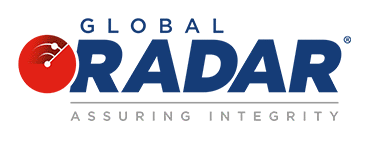Growth of Transaction Laundering
A troubling global trend in the financial services sector has emerged over the course of the past week, which may lead to serious ramifications on financial institutions around the world in the coming months. Ron Teicher, CEO of the bank-centered cyber intelligence provider EverCompliant, shed light on this issue in his article “Traditional Risk Scoring is Dead” cited in BSA News Now on September 20th, 2016. In the article, Teicher illustrates how the entire card payments acquiring and processing industry bases its risk management procedures off of “chargeback optimization”, and how this is a faulty process that can leave banks susceptible to illegal financial activity without them even realizing these acts are occurring. The author states that in today’s society, banks have focused the majority of their efforts and manpower on “high-risk” merchants and their activity, when low-risk merchants who are flying under the radar are illicitly performing illegal activities. Teicher later explains that “The technological advances that spurred the proliferation of payment systems combined with the easiness of establishing online merchants, created loopholes for criminals that can now use ‘transaction laundering’ to process payments for the sales of illicit merchandise and by that conduct their business uninterrupted” (Teicher, 2016).
The article goes on to give an exemplary explanation on how transaction laundering, defined as a merchant processing payment card transactions on behalf of another merchant, actually occurs. Teicher describes a situation where a low-risk merchant, someone who is selling goods with low cash values and carrying low chargeback rates, sets up an ecommerce website, in this case for “office supplies.” In the transaction laundering scenario, this low-risk merchant’s site is used as a front for funneling the transactions from a higher cash value site, such as a diamond sales site. Teicher then asserts that “The diamond sales will be routed through the payment page of the office supply site and appear as office supply purchases to the processor”, with the customers purchasing and receiving diamonds while their credit card statements read “office supplies” (Teicher, 2016). Similar scenarios have arisen more frequently of late, and the merchants selling high-value items are bypassing the AML/KYC regulations that would normally apply to their items, with processors and card companies facilitating high-risk AML transactions without any knowledge of it. “Transaction laundering often masks proceeds stemming from illegal activities such as drugs and weapons trade, illicit pornography, and counterfeit goods. Since transactions are processed through a registered merchant account, MSP’s end up unknowingly facilitating this illegal and brand damaging activity” Teicher explains. This is what has brought about the global trend towards complete merchant portfolio analysis, and a solution that improves upon traditional risk-scoring tactics to prevent transaction laundering and other forms of financial crime.
AML/CTF Legislation Updates
Several developments have taken place recently on Capitol Hill in regards to AML/CTF activity. The House of Representatives Financial Services Committee will be holding a hearing in the near future to examine the “terrorism financing implications” of the “ransom payments” made by the United States to Iran in January of 2016. According to the Wall Street Journal, it is alleged that “the Obama administration secretly organized an airlift of $400 million worth of cash to Iran that coincided with the January release of four Americans detained in Tehran” (Solomon & Lee, 2016).
Additionally, the House Financial Services Task Force to Investigate Terrorism Financing will release its final report on global matters this Fall, and the “Joint Fact Sheet on Foreign Correspondent Banking”, which outlines the U.S. Treasury Department’s approach to enforcement of economic sanctions, anti-money laundering, and CTF laws, was recently released as well.
In a separate matter, Wells Fargo was assessed a $100 million fine by the Consumer Financial Protection Bureau on September 8th for “illegally opening unauthorized accounts in order to boost sales figures” (Boggs, 2016). The fine is now the largest is the largest to ever be issued in the CFPB’s history. Several representatives from Wells Fargo, including Chairman and CEO John Stumpf, have been summoned to Washington, D.C. for a hearing on the matter, which will take place on September 22nd. Wells Fargo and federal regulators have been asked to provide internal documents directly related to their immoral practices, and the House Financial Services Committee has launched an investigation into the company’s alleged fraud as well.
Citations:
Boggs Link – https://www.lexology.com/library/detail.aspx?g=c4bedc35-950f-4709-bb7d-9be84e42463c
Solomon & Lee Link – https://www.wsj.com/articles/u-s-sent-cash-to-iran-as-americans-were-freed-1470181874
Teicher Link – https://internationalbanker.com/technology/traditional-risk-scoring-dead/

